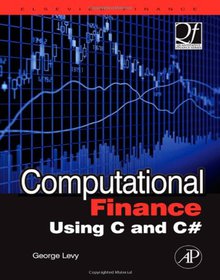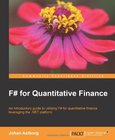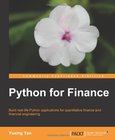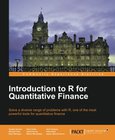Computational Finance
Using C and C#

Book Details:
| Publisher: | Academic Press |
| Series: | Academic Press , Using |
| Author: | George Levy |
| Edition: | 1 |
| ISBN-10: | 0750669195 |
| ISBN-13: | 9780750669191 |
| Pages: | 384 |
| Published: | May 15 2008 |
| Posted: | Nov 19 2014 |
| Language: | English |
| Book format: | |
| Book size: | 4.09 MB |
Book Description:
In Computational Finance Using C and C# George Levy raises computational finance to the next level using the languages of both standard C and C#. The inclusion of both these languages enables readers to match their use of the book to their firm's internal software and code requirements. Levy also provides derivatives pricing information for: - equity derivates: vanilla options, quantos, generic equity basket options- interest rate derivatives: FRAs, swaps, quantos - foreign exchange derivatives: FX forwards, FX options- credit derivatives: credit default swaps, defaultable bonds, total return swaps. Computational Finance Using C and C# by George Levy is supported by extensive web resources. Available for purchase on the multi-tier website are e versions of this book and Levy's first book, Computational Finance: Numerical Methods for Pricing Financial Derivatives. Purchasers of the print or e-book can download free software consisting of executable files, configuration files, and results files. With these files the user can run the example portfolio application in Chapter 8 and change the portfolio composition and the attributes of the deals.In addition, Upgrade Software is available on the website for a small fee, and includes: . Code to run all the C, C# and Excel examples in the book . Complete C source code for the Analytics_Mathlib maths library that is used in the book. C# source code, market data and portfolio files for the portfolio application described in Chapter 8All the C/C# software can be compiled using either Visual Studio .NET 2005, or the freely available Microsoft Visual C#/C++ 2005 Express Editions. With this software, the user can open the files and create new deals, new instruments, and change the attributes of the deals by editing the code and recompiling it. This serves as a template that a user can run to customize the deals for their personal, everyday use. * Complete financial instrument pricing code in standard C and C# available to book buyers on companion website * Illustrates the use of C# design patterns, including dictionaries, abstract classes, and .NET InteropServices.
Book categories:
Programming , Software , Business & Culture , Business & Investing , Languages & Tools , Programming Languages , C# , Manager's Guides to Computing , Economics , Econometrics , FinanceDownload Link:
Related Books:
F# for Quantitative Finance
An introductory guide to utilizing F# for quantitative finance leveraging the .NET platform Overview Learn functional programming with an easy-to-follow combination of theory and tutorials Build a complete automated trading system with the help of code snippets Use F# Interactive to perform exploratory development Leverage the .NET platform and other existing tools from Microsoft using F# In Detail F# is a functional programming language that allows you to write simple code for complex problems. Currently, it is most commonly used in the financial sector. Quantitative finance makes heavy use of mathematics to model various parts of finance in the real world. If you are interested in using F# for your day-to-day work or research in quantitative fina...
Python for Finance
Build real-life Python applications for quantitative finance and financial engineering with this book and ebook Overview Estimate market risk, form various portfolios, and estimate their variance-covariance matrixes using real-world data Explains many financial concepts and trading strategies with the help of graphs A step-by-step tutorial with many Python programs that will help you learn how to apply Python to finance In Detail Python is a free and powerful tool that can be used to build a financial calculator and price options, and can also explain many trading strategies and test various hypotheses. This book details the steps needed to retrieve time series data from different public data sources. Python for Finance explores the basics of progr...
Introduction to R for Quantitative Finance
R is a statistical computing language that's ideal for answering quantitative finance questions. This book gives you both theory and practice, all in clear language with stacks of real-world examples. Ideal for R beginners or expert alike. Overview Use time series analysis to model and forecast house prices Estimate the term structure of interest rates using prices of government bonds Detect systemically important financial institutions by employing financial network analysis In Detail Introduction to R for Quantitative Finance will show you how to solve real-world quantitative finance problems using the statistical computing language R. The book covers diverse topics ranging from time series analysis to financial networks. Each chapter briefly pr...
2007 - 2021 © eBooks-IT.org



